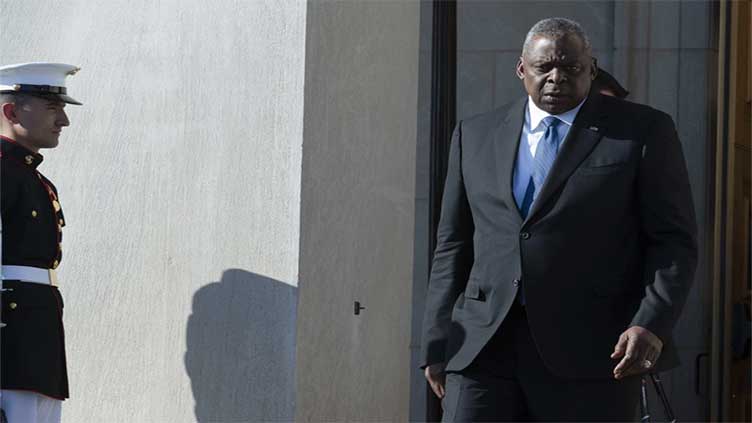US defense chief vows continued aid to Ukraine, even as Congress is stalled on funding bill

World
US defense chief vows continued aid to Ukraine, even as Congress is stalled on funding bill
RAMSTEIN AIR BASE, Germany (AP) — Defense Secretary Lloyd Austin vowed Tuesday that the U.S. will continue to support Ukraine’s war effort against Russia, even as the U.S. Congress remains stalled over funding to send additional weapons to the front.
“The United States will not let Ukraine fail,” said Austin, addressing more than 50 defense leaders from Europe and around the world who are meeting at the Ramstein Air Base in Germany. “This coalition will not let Ukraine fail. And the free world will not let Ukraine fail.”
The meeting comes a week after U.S. defense officials managed to find and use $300 million in contract savings to fund a new package of military aid for Ukraine, pulling weapons from Pentagon stocks.
It was the first tranche of weapons sent since December, even as battlefield conditions in Ukraine have been getting increasingly dire.
The found money — which officials called a “one-time shot” — allowed the Defense Department to use presidential drawdown authority (PDA) to pull weapons and equipment from Pentagon stocks and send them quickly to Ukraine. The funds are then used to buy replacement items to ensure the U.S. military is ready to fight and protect the homeland.
U.S. leaders had insisted for the past three months that they couldn’t take more weapons off the shelves because they have run out of money to replenish the stocks. Congress has been deadlocked for months over a new $95 billion supplemental bill that includes about $60 billion in aid for Ukraine.
U.S. officials maintain there is bipartisan support for the package, but a number of Republicans oppose it and House Speaker Mike Johnson has refused to bring the bill to the House floor for a vote.
Funding to train Ukrainian forces is also at risk. The U.S. Army regional command for Europe and Africa, which is based in Germany, has spent more than $500 million out of its base budget so far this fiscal year to conduct the training and expects to run out of money by June, according to U.S. officials.
The command spent about $2 billion for training in the fiscal year that ended last Sept. 30, which was paid for through supplemental funding passed by Congress. The U.S. has trained about 19,000 Ukrainian forces to date, the bulk of them at the Army bases in Germany. All together, the international coalition has trained more than 129,000 Ukrainians at more than 100 different locations around the world.
Training has slowed a bit, as the U.S. is waiting for the next large tranche of Ukrainian troops to arrive. Scheduling can be difficult because Ukraine often has to pull troops from the battlefront to send them for training.
U.S. officials have been publicly expressing the hope that lawmakers will manage to act soon to approve the supplemental bill, but they have also been struggling to find other ways to get assistance to Ukraine.
Defense officials continue to warn that Ukraine remains heavily outgunned by Russia on the battlefield, and note persistent reports of Ukrainian troops rationing or running out of ammunition on the front lines.
Just last month, Ukrainian troops withdrew from the eastern city of Avdiivka, where outnumbered defenders had held off a Russian assault for four months. Troops complained of running low on ammunition while facing a constant barrage of airstrikes from glide bombs, enormous unguided Soviet-era weapons, retrofitted with a navigational targeting system, that obliterate everything around them, as well as motion-sensing explosive drones that could enter buildings and hunt personnel.
Tuesday marks the 20th meeting of the Ukraine Defense Contact Group, which has been the key organization coordinating for the delivery of weapons and other aid to Ukraine.
In his opening remarks, Austin said Russia has paid a “staggering cost” for the war, repeating estimates that at least 315,000 Russian troops have been killed or wounded in the war, which has cost Moscow up to $211 billion.
“Ukraine’s troops face harsh conditions and hard fighting. And Ukraine’s civilians endure a constant barrage of Russian missiles and Iranian drones,” said Austin. “But Ukraine won’t back down. And neither will the United States.”



